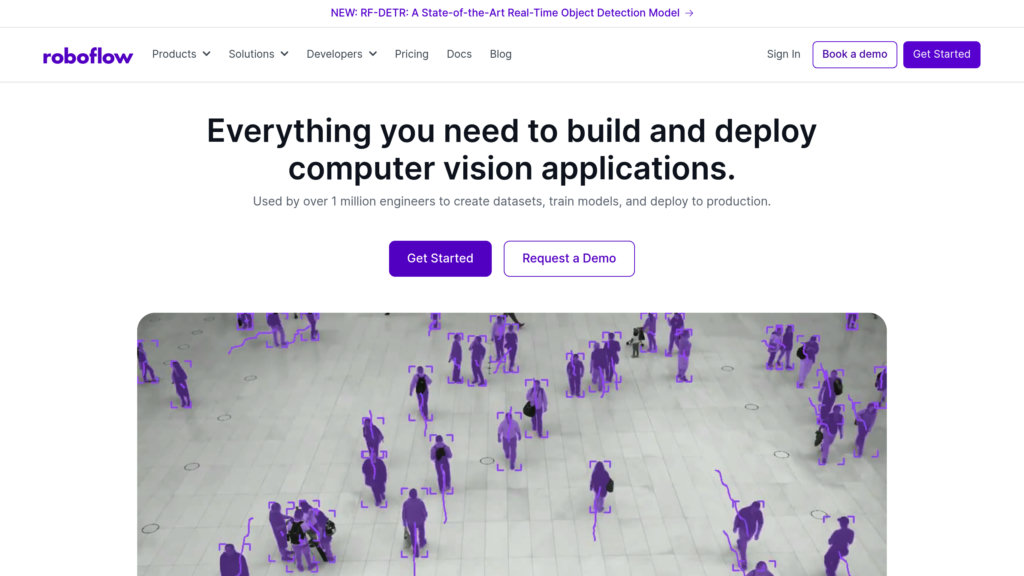Roboflow
Computer vision platform to build and deploy custom AI models quickly
Introduction
What is Roboflow?
Roboflow is a sophisticated computer vision platform engineered to streamline the complete AI model journey. It facilitates everything from gathering and labeling data to model training, assessment, and final implementation. The platform delivers a unified workflow for dataset management, AI-powered annotation, data enhancement, and training across various model architectures. It supports deployment through cloud APIs or on edge devices, enabling real-time analysis and scalable operations. Adopted by more than 16,000 entities, including numerous Fortune 100 firms, Roboflow ensures enterprise-level security and compliance, making it a fit for sectors like healthcare, industrial manufacturing, retail, and defense.
Key Features:
• Complete Lifecycle Management: A unified environment handling dataset curation, annotation, augmentation, model training, evaluation, and deployment.
• AI-Powered Labeling: Speed up the annotation process with intelligent tools that suggest or automate labeling, boosting both speed and precision.
• Versatile Deployment: Launch models using hosted APIs, on edge hardware (e.g., NVIDIA Jetson, Luxonis OAK), mobile SDKs, or in your own private infrastructure.
• Advanced Model Training & Analysis: Train with multiple architectures and gain deep insights into performance with metrics like precision, recall, and mAP.
• Enterprise Security: Features SOC 2 Type II compliance, HIPAA-ready systems, end-to-end data encryption, and adaptable security controls.
• Scalable Performance: Cloud infrastructure that auto-scales with load balancing to manage high-volume and variable inference demands.
Use Cases:
• Industrial Quality Assurance: Automate the identification of product defects in manufacturing to cut expenses and enhance quality standards.
• Medical Image Analysis: Employ AI models to support diagnostic procedures and improve patient outcomes through advanced image interpretation.
• Retail Stock Optimization: Utilize vision technology to monitor inventory automatically and refine supply chain management.
• Intelligent Security Systems: Set up real-time object recognition and monitoring for robust security and surveillance solutions.
• Agricultural Analysis: Assess crop vitality and conduct field surveillance using AI-driven image analysis techniques.
